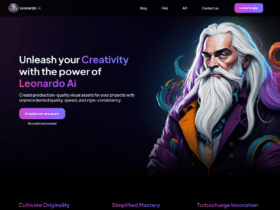Introduction Of The Top Best Technology Stacks
The Top Best Technology Stacks. Technology is changing so rapidly that it can be hard to keep up. That’s why we’ve put together a list of the top technology stacks for your business. Each one provides essential tools and services that you need to stay competitive in today’s market. From email marketing to CRM systems, these are the tools that will help you run your business more effectively. Check them out and see which one is right for you!
The Security Stack
There are many technology stacks available to protect a business’s data and operations. In this blog post, we will discuss the top five security stacks for businesses of all sizes.
1. Security Information and Event Management (SIEM)
SIEM is a broad term that refers to a collection of tools, techniques, and processes that enable organizations to monitor their security posture and detect and respond to abnormal events. SIEM can collect and organize data from across an organization’s systems in real-time, making it easier for security teams to identify threats and administer response plans.
2. Identity Management
Identity management is the process of securing user credentials against loss, theft, or unauthorized use. Users need access to corporate resources to do their jobs; however, identity theft can compromise those assets if sensitive information such as passwords or Social Security numbers is exposed.
Identity management solutions provide a secure way to store user credentials, validate them against authorized sources such as directories or email addresses, and enforce policies regarding password length, change notification requirements, etc.
3. Threat Detection
Threat detection is the process of identifying malicious activity before it causes damage or harm to your organization’s infrastructure or data. This includes monitoring for suspicious behaviour such as large volumes of traffic coming from countries known to be hotspots for malicious activity or unusual activity on network interfaces associated with known malware campaigns. Threat detection technologies can also scan through large amounts of data looking for
The Data Stack
The data stack is the collection of technologies used to store, process, and retrieve data. It includes everything from the database management system (DBMS) to the storage technology. Here are the five best data stacks for 2018:
1. MongoDB: This open-source database management system is well known for its scalability and performance. MongoDB also has a rich document-oriented language that makes it easy to query and manage data.
2. Amazon Redshift: Amazon Redshift is a petabyte-scale data warehouse that provides fast query performance and durability through multiple snapshots and replicas. It also offers tight integration with other Amazon AWS services such as S3, EC2, and Kinesis Data Streams. You Can Also Read The Future Of Fusion Technology.
3. Microsoft Azure HDInsight: Azure HDInsight is an enterprise-grade analytics platform that lets you quickly build sophisticated predictive models using SQL, machine learning algorithms, and graphical tools like Spark or Tableau Desktop.
4. Google BigQuery: Google BigQuery let you access large datasets quickly and easily using SQL queries. It also has a variety of advanced features like batch processing and streaming analytics that make it suitable for big data applications.
5. MySQL: MySQL remains one of the most popular databases on the market thanks to its ease of use and widespread adoption across web applications and enterprise environments.
The Communications Stack
The Communications Stack is the software that allows your business to interact with customers, partners, and suppliers. It includes the tools to send and receive emails, create documents, manage contacts, and more.
The most popular communications stacks are:
• Email: The most common use of email is to send and receive messages between people in a company. Email servers store messages in inboxes and outboxes, and clients can send and receive emails using built-in or third-party tools.
• Document Management: Companies need to exchange documents with customers, partners, and other stakeholders. A good document management system lets you organize all your documents into folders, add metadata such as keywords and dates, automate document creation flows, track changes made to files, and more.
• Contact Management: Contact management systems let you manage customer data including addresses, phone numbers, email addresses etc. They also allow you to assign roles to individuals so that they can better manage customer interactions.
The Cognitive Stack
The cognitive stack is a term used to describe the technologies and tools that are used to support thought. It includes software such as word processors, browsers, and databases; hardware such as laptops and desktop computers; and services such as email, storage, and collaboration.
When thinking about the cognitive stack, it is important to consider not only what is on the surface of a device or computer, but also what is beneath it. For example, a laptop typically has one or more processors, memory cards or hard drives, a screen and speakers.
However, beneath those components may be other devices such as imaging sensors that allow the computer to capture images or video for use in graphics applications or speech recognition software that allows users to type text without looking at the keyboard.
There are many different cognitive stacks available today. Some popular ones include the open-source Mozilla Firefox browser combined with Google Chrome for Windows; Microsoft Word 2013 plus SkyDrive for document storage; Apple OS X Yosemite with iCloud for cloud-based file sharing.
Slack for team communication; and Salesforce for customer relationship management (CRM). Each of these systems has its strengths and weaknesses, so it’s important to choose the right one for your needs.
It’s also important to keep in mind that not all cognitive stacks are created equal. For example, Firefox doesn’t offer as many features as Safari or Chrome when it comes to browsing the web, but it’s often faster due to its lightweight design. Similarly, Salesforce
Gartner Hype Cycle
The hype cycle is a process of identifying and analyzing changes in public attitudes towards technology. The Gartner Hype Cycle describes five stages of interest in technology:
1. Uniqueness
2. Interest
3. Evaluation
4. Advise
5. Transform
Security Tools
Security tools are essential for any organization, large or small. Often, they are overlooked in favour of other technology investments, but neglecting security can lead to serious consequences. Here are five of the best security technologies:
1. Antivirus Software: Antivirus software is a critical tool for protecting your computer from viruses and other malware. It scans your system for infected files and warns you if it finds anything suspicious.
2. Firewall: A firewall protects your computer by blocking unauthorized access to your network and sensitive information. It can also help protect against malware attacks.
3. Identity management software: ID management software helps organizations manage user accounts and passwords securely. It can also help prevent unauthorized access to databases and systems.
4. Secure hypervisor: A secure hypervisor is a virtualization technology that helps protect data from being accessed by unauthorized users. It prevents malicious insiders from compromising data stores and networks.
5. Network intrusion detection/prevention (NID/P): NID/P monitors network traffic for signs of infiltration or attack and takes action if necessary, such as sending alerts to administrators or disabling offending devices on the network
Web Hosting Tool
There are many different web hosting tools on the market, so it can be tough to decide which one is right for you. Here are some of the top choices:
1. Bluehost: Bluehost is one of the most popular web hosting companies on the market, and for good reason. They offer a variety of features and services, and their customer service is excellent.
2. GoDaddy: GoDaddy is another well-known web hosting company, and for good reason. They offer a wide range of features and services, as well as great customer service.
3. WP Engine: WP Engine is another great choice if you’re looking for a robust platform with lots of features. They also have excellent customer service.
4. SiteGround: SiteGround is a great option if you’re looking for reliable hosting with plenty of features and options. Their customer service is also top-notch.
Server Stacks
There is no one answer to the question of what technology stack is best for a business. Each company has its own needs, preferences, and budget. However, many businesses are choosing to use a combination of different technology stacks.
One popular combination is called the “server stack.” This refers to the various components that make up a business’ backend system. These components can include:
Server: The server stack typically includes a server, operating system (OS), and application software. The server acts as the backbone of the business’ network and stores data and applications. It’s important to choose a quality server that’s equipped with the latest security features and performance expectations.
Storage: Many organizations also use storage options in their server stacks. Storage can be local or remote, depending on the needs of the organization. Local storage means data is stored on-site within the firewall of the business’ servers. Remote storage means data is stored off-site but still accessible through the business’ servers.
Networking: A good server stack should include robust networking capabilities. This includes both physical and virtual networking components. Physical networking refers to actual connectors between nodes in a network, while virtual networking involves using technologies such as VPNs (virtual private networks) to create secure connections across networks.
Desktop Stacks
The top best technology stacks for desktop productivity and collaboration have been compiled in this article. The stack includes open-source software, commercial products, and free software. These stacks allow users to work on a variety of projects with ease. They also promote teamwork and communication.
The first stack is the OpenStackStack. This stack is composed of open-source software such as Nova Compute, Glance Image Service, and Keystone Controller. It allows users to manage their computing resources centrally. Additionally, it offers compatibility with other open-source technologies such as Kubernetes and SwiftStack.
The next stack is the VMware vSphere Stack. This stack is composed of VMware products such as vCenter Server, vCloud Air, and vRealize Automation. It provides users with a centralized platform for managing their virtual infrastructure. It also supports automation tools such as PowerCLI and vSphere Update Manager for updating systems remotely.
The last stack is the Microsoft Windows Server Stacks. This stack is composed of commercial products such as Windows Server 2016, Windows 10 Enterprise Edition, and System Center 2016 Essentials Edition.
It provides users with a centralized platform for managing their IT assets including servers, desktops, storage solutions, virtual machines (VMs), cloud services, and applications. Additionally, it offers compatibility with other commercial technologies such as Office 365 ProPlus and Dynamics 365 for business operations management purposes
Conclusion
As a busy professional, it’s important to have the best technology stacks possible so you can be productive from anywhere in the world. I’ve compiled a list of my top ten picks for the best technology stacks for 2018, based on features, price point, and overall versatility. Whether you’re looking for an affordable solution that will work with most websites and apps or one that has more specialized features, this list has something for everyone. Give it a try and see which stack works best for you!

















Leave a Reply
View Comments